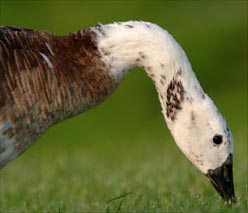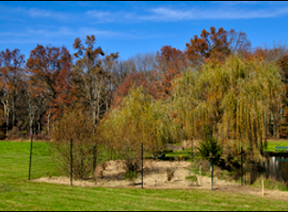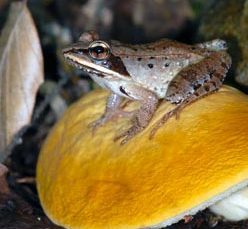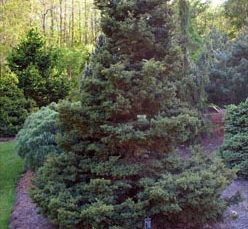Sometimes, fall walks with my dog surprise me. Last October, we walked along the edge of a local golf course. It was a beautiful, sunny day, but there were few golfers about. At a turn in the path, my dog saw something interesting and tried to take me to it. After a few steps, I saw that she had found a Canada goose resting in the long grass — the golf course “rough.” I stopped the dog, but the goose looked at us and did not move. Then, I swear, the goose spoke to me!
“I have been in flight for days, coming from mid-Ontario. I am not so young any more, and I don’t seem to have the energy of my youth. My mate was killed by a hunter last year, my goslings (her babies) are grown and doing their own thing, so here I am all alone.”
Who would not feel some pity at this story? The goose explained that she was part of a flight of 30 or 40 birds whose destination was Chesapeake Bay. She was glad they were not aiming to spend the winter in Mexico, as she was sure she did not have that distance in her.
“Why did you stop here?” I asked. They liked the available long grass in the rough, and the nearby water trap which were nicely placed within an easy walk. She felt safe, she said, because the only predators were occasional dogs, but she noted that even my dog was on a leash, as most “golf course dogs” seemed to be. This is a beautiful and peaceful place, she told me, except for the day when I was nearly hit by a golf ball, which brought several old men on golf carts to chase me from my nest. She said she realized they were looking for their golf ball, not for her. They had soon found the ball and moved on to complete their game.
I asked my new friend about her family. Her male goose had been a wonderful father, she said. He would stand tall and guard her while she sat on a nest of eggs. What I would call the incubation period, in which the female sits on and warms the eggs while the male stands guard, lasts for 24 to 28 days after laying, she told me. She remembered how, after the eggs hatched, she and her mate would lead their goslings in a line, usually with one parent in front, and the other at the back. While protecting their goslings, she recalled, they often had to violently chase away threatening nearby creatures — anything from small blackbirds to large humans, who might approach. She and her mate would warn intruders by giving off a hissing sound and then attack with bites and slaps of their wings, if the threat did not retreat or actually seized a gosling. “Happily, that never happened to us,” she said.
She continued, “The goslings enter a ‘fledging’ stage any time from six to nine weeks of age. They do not leave their parents until after the spring migration, when they return to their birth place. Once they reach adulthood, she told me, Canada geese are rarely preyed upon (aside from the threat of humans). But the geese must be on the watch for coyotes, gray wolves, snowy owls, the golden eagle and the bald eagle.”
She surprised me by noting that goslings are able to swim immediately. The male and female geese both accompany their babies during their swims. She was proud to report that goslings can dive and swim for 30 or 40 feet underwater, and they eat almost continuously to attain growth for their first migration flight. The mature goslings, now ready for migration, learn the migration routes from their parents and follow the same route in subsequent years.
My friend stopped talking for a moment, and reflected that she had not heard of predators attacking her goose friends in New Jersey — except for the humans! I had to tell my feathered friend that not all humans are a threat — many are friends, and keenly anticipate searching the sky in the spring or autumn at the first sound of honking Canada geese, flying by in their V-shaped formations. She said that was encouraging, and did I know that the front position is rotated among several birds since flying at the front consumes the most energy?
The sun was setting, and my dog and I were ready to return to our “nest” for dinner. We were sorry to leave our new goose friend, but she advised us she would be OK, and probably would resume flying south at sun rise. We wished her safe travel.
Although often disparaged as a nuisance, we gained from this Canadian goose a new respect for these hearty birds, hoping that as long as they would stay away from airplanes in flight, they would continue to grace our open spaces.




Loved your story. Aching for the old goose. Hope she makes it. I am especially fond of Canadian geese and have a couple, Fred and Ethel, who return to the pond in front of my house every year to start another family. She lays several eggs, but again this year, only 2 hatched. She bawls at the loss of her unhatched goslings. And I am bawling today because they left to join the larger group at a larger pond for the summer. I shall miss them, but I’m sure they will be back next March.